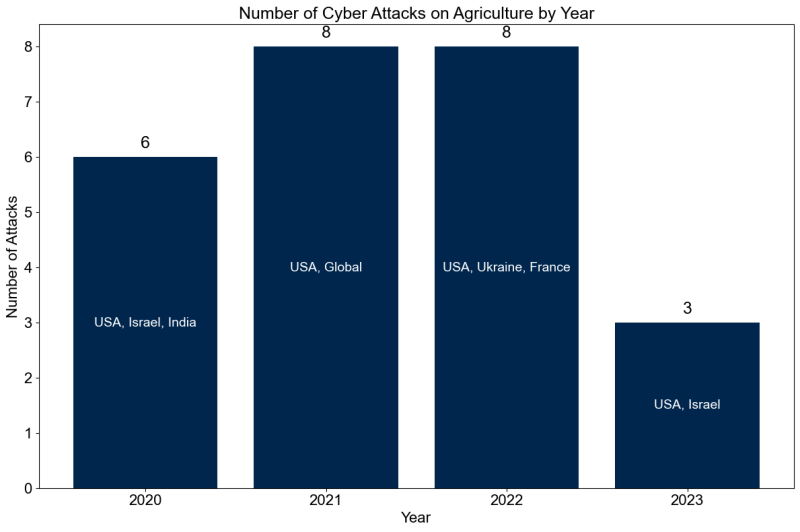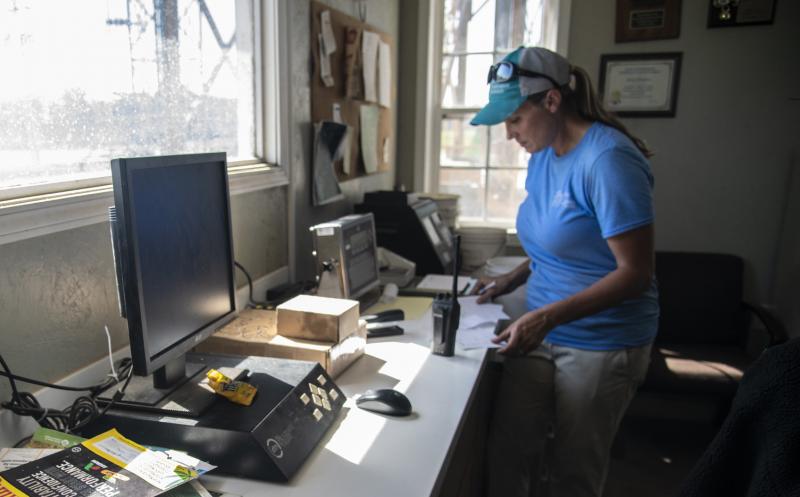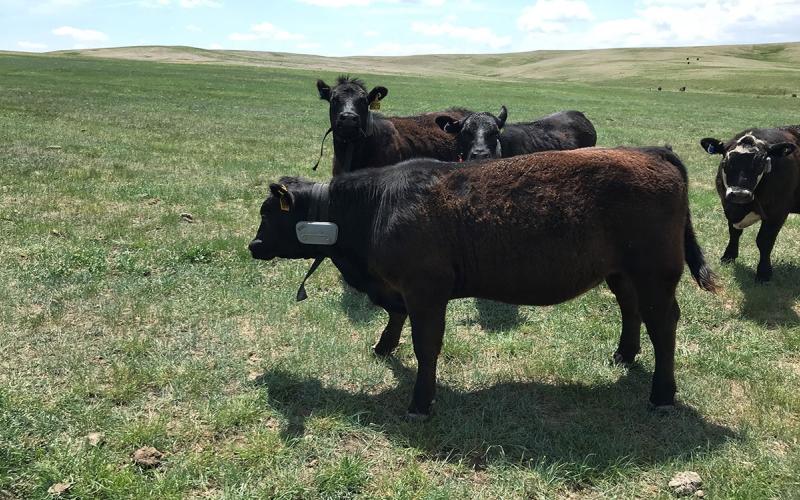Digital Agriculture Disruptions

Recently, a large aurora borealis ‘Northern Lights’ solar storm delighted many South Dakota residents; however, precision planting equipment that operates off GPS signals began to fail on tractors across South Dakota for several days, making it difficult for farmers to plant crops during this critical planting window. Though this disruption lasted only a few days and was due to a natural phenomenon, it highlights the ever-increasing reliance on technology within the agriculture sector and the potential consequences of when technology goes down.
Advances in technology have seen many new sensor-based technologies commercially available for agriculture producers. These tools can range in complexity from simple cell phone apps to advanced ones that regulate environmental conditions for confined feeding operations. Many of these advances are powered by what is collectively called the Internet of Things (abbreviated as IoT), which can refer to any object or device that can send and receive data automatically through the Internet. The growing digitalization of food production systems and the increased prevalence of smartphones mean farmers, ranchers, and food supply chains are increasingly connected and reliant on the digital world. The food supply chain comprises of agriculture production, post-harvest processing, distribution, retail, and consumption. The recent COVID-19 pandemic exposed how susceptible our agriculture supply chain is to disruptions. One threat to our food system that everyone should take an active role in preventing is the threat of cyber-attacks.
Cyber Attacks on Agriculture

As internet-connected sensors and data systems become more widely adopted, the potential threat increases for bad actors to hack vulnerable technologies and gain access to producer data, manipulate the technologies themselves to generate false data, or disable technologies altogether. For instance, stories have been reported on Ukrainians hacking and disabling tractors seized by the Russian military, rendering them useless. According to the FBI's 2023 Internet Crime Complaint Center (abbreviated as IC3) Report, there were 2,825 ransomware complaints across various sectors, resulting in approximately $59.6 billion in losses. Of these complaints, 1,193 were from 16 critical infrastructure sectors, including the food and agriculture industry. An FBI notification in 2016 indicated that smart farming would likely increase cyber targeting against the United States food and agriculture sector. Subsequent reports have shown that ransomware attacks have increasingly targeted the food and agriculture sector, with the average ransomware attack doubling from 2019 to 2020, and the largest ransom demands exceeding $20 million USD. From 2018 to May 2023, ransomware attacks hit 157 food, beverage, and agriculture organizations, with high-profile attacks impacting the beef supply chain. Recently, agricultural cooperatives have faced numerous cyber-attacks due to their vital role in the food supply chain and the time-sensitive nature of their operations. An attack during peak seasons can severely disrupt the supply of essential goods, like seeds and fertilizers, affecting planting schedules and the overall food supply chain. The FBI has noted these attack patterns, with several incidents reported during the fall 2021 harvest and before the 2022 planting season. Due to the necessity of maintaining supply chain integrity, these cooperatives might be seen as more likely to pay ransoms, making them attractive targets for ransomware attackers (FBI, 2021, 2022).
Who is at Risk?

Though these attacks may seem to target large or medium organizations, individual farms and ranches are also susceptible to cyber-attacks and scams. In January 2021, a U.S. farm lost $9 million in a ransomware attack, which resulted in a temporary shutdown of its operations. The attacker was able to gain administrator-level access to the internal servers using compromised credentials. A recent Gallup poll found that the highest overall rate of cyber scams (22%) was in age groups 18 to 29, with the next largest (17%) group being the 30 to 49 age group. Though Hollywood often portrays teams of hackers writing code to break into systems, often these cyberattacks take the form of an innocuous email or text message seemingly from someone you know with a link or email attachment to click on. These scams, often referred to as phishing or social engineering, can allow bad actors to gain access to systems, steal data and personal information, and potentially disable critical equipment or infrastructure.
Conclusion
With the pressure of day-to-day operations of the farm or business, preparing for and preventing cybersecurity attacks may take a backseat to more urgent matters. However, it is essential to begin considering ways to protect yourself and your business in the case of cybersecurity attacks. As the data above suggests, farms, ranches, and agribusinesses are particularly vulnerable to cybersecurity attacks, and as our world becomes increasingly dependent on technology, planning for safeguarding these systems is essential. In future cybersecurity articles, we will detail some specific ways to protect your farm, ranch, or business from cybersecurity attacks.
Citations
- Impact of COVID-19 on the food supply chain, Food Quality and Safety.
- Scams: Relatively Common and Anxiety-Inducing for Americans, Gallup.
- Smart Farming May Increase Cyber Targeting Against US Food and Agriculture Sector, Federal Bureau of Investigation.
- Cyber Criminal Actors Targeting the Food and Agriculture Sector with Ransomware Attacks, Federal Bureau of Investigation.


